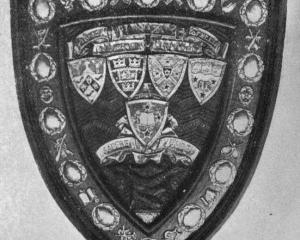
They bring the first news of that isolated island that we have had for some months past. There are at present on the island 165 persons, including the missionary and his family. This missionary was sent to the island from Australia, and the church of which all the islanders are members is that of the Seventh Day Adventists. Plenty of fruit is grown, and passing ships have of late taken large quantities away with them in exchange for clothing and stores. The steamer by which these three men came to Auckland arrived at Pitcairn about 14 days ago, and immediately several boats put off from the shore to trade with the officers and crew.
These descendants of the Bounty mutineers are a most industrious people, and besides the fruit which they sell, they manufacture from the scanty means at hand many articles which find a ready sale among the sailors calling there. At the present time a large number of the men are engaged on the island in building a schooner. This ship will be constructed from their own timber, and even the nails and rivets which they are using are being made by the islanders. It is intended that it shall be used to trade with Tahiti and other islands. It will be also used for missionary work. The island of Pitcairn is only five miles around, so that there is little time necessary to make an exploration of the island.
The skeleton of the Bounty is still lying on the beach, but little of it remains to remind the islanders of the mutiny of 1787. A large number of boats are made on shore, and these are used for visiting passing vessels. Built from the English design, they resemble the type of lifeboat carried by overseas ships.
• "No less than 900 deaths from cancer were recorded in New Zealand in the year 1915-1916," said Dr T. A. Valintine, chief dominion health officer, in a letter received from him by the Auckland Hospital and Charitable Aid Board. In asking for the co-operation of the board in combating the dread disease, Dr Valintine pointed out that the number of deaths was the highest on record, though it was just possible, he said, that the abnormal increase was more apparent than real. Nevertheless it was desirable that there should be united action between hospital boards, the medical profession, and the department with a view to stemming the ever-increasing mortality. It would be advisable to draw the attention of the public to the fact that the outpatients’ department of hospitals of the dominion were open to the public for the purpose of consultation and advice, as well as for treatment.
"Many a case," said the doctor, "could have been arrested and cured had it been taken in time."
In conclusion, it was suggested that suitable medical men should be appointed to give lectures in regard to cancer. The letter was sent to the Finance Committee.
• Our correspondent at Home quotes London Opinion as saying: "Two inventive New Zealanders have solved a problem which seems to be important, although, personally, I have never experienced the urgency of it. It is the soldering of aluminium. On reaching London they obtained a cast-iron patent, as well as getting the glad hand from scientific and commercial men. The War Office asked for a demonstration at Woolwich Arsenal, and was so satisfied that it grabbed the patent and has sailed in to do big things on its own account with the invention."
• Our London correspondent writes that Miss Grace Joel is interesting herself in a movement to procure for the Dunedin Art Gallery a landscape by J. W. North, A. R. A., R. W. S.
Subscriptions for the purchase of the work are being obtained only from ladies, and the collection in New Zealand is in the hands of Mrs Arthur Fisher (Dunedin). Melbourne has two of North’s and Sydney a large oil. Sargent is a great admirer of North’s work, and after his death — he is now a very old man — his pictures are likely to increase in value on account of the exquisite colour, charm, and personality they possess. — ODT, 7.11.1916.
• COPIES OF PICTURE AVAILABLE FROM ODT FRONT OFFICE, LOWER STUART ST, OR WWW.OTAGOIMAGES.CO.NZ












